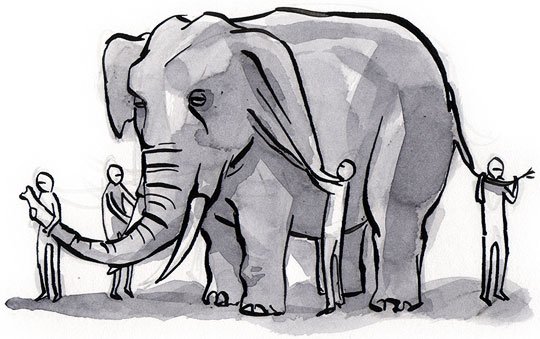Our thinking is often flawed, but with time and resource constraints – we may not have the luxury of getting 3rd-party or objective review of our work and in the time frame we need it. Fortunately, there are questions we can ask ourselves to help remove bias in our strategic thinking.
The power of the questions we ask ourselves became apparent to me during a talk given by art critique Jerry Saltz, who was with the Village Voice at the time. He mentioned asking ourselves “what would I like about this artwork if I was the type of person who likes this artwork?” I immediately related to my view on video art. I’ve never really appreciated it. It’s not very inviting to me and I often find it creepy.
Yet, that simple question was illuminating. It took me and my own biases out of the equation. It gave me fresh eyes and a new way to look at the artwork. It’s been equally as valuable with my professional life.
Strategic Thinking Bias
As a consultant and adviser to many new businesses, it’s not helpful for me to say there’s no way I’d pursue a given opportunity especially to a founder or company who has already invested quite a bit in building a new product. I’m asked instead for recommendations on how to best approach a problem or situation. Unfortunately, I can jump quickly as to why the opportunity is bad or why a business shouldn’t be pursued. This first reaction, often based on a first pass at data and my “gut reaction,” is what I consider the strategic thinking bias.
To break myself out of this frame of mind, I take what Jerry Saltz suggested and ask “How would I approach this business if I was the type of person who wants to pursue it?” It’s surprising how a simple re-frame like that can remove bias from your own perceptions, and how empowering that is. It shifts your brain into discovery mode and away from my early assumptions around why things won’t work.
Biases of Intuition
 I’m not alone in this initial reaction and counterproductive thinking. We can all fall into it and often too quickly. Daniel Kahneman offers useful insights as to how and why in Thinking, Fast and Slow. He discusses how most judgments are appropriate most of the time and therefore the confidence we have in our intuitive beliefs and preferences is usually justified.
I’m not alone in this initial reaction and counterproductive thinking. We can all fall into it and often too quickly. Daniel Kahneman offers useful insights as to how and why in Thinking, Fast and Slow. He discusses how most judgments are appropriate most of the time and therefore the confidence we have in our intuitive beliefs and preferences is usually justified.
We are often confident, however, even when we are wrong, and he points out that an objective observer is more likely to see our errors than we are. I’d highly recommend reading the book to improve the ability to identify and understand errors of judgment and choice.
Questions That can Help
In the absence of using an objective observer or 3rd-party review, getting into the habit of asking different questions ourselves can bring some very valuable help. If you’re having difficulty getting started, here are some questions that can help.
- How can I do this smarter?
- How can I make this better?
- How can I successfully overcome this?
- What is the hidden opportunity here that I am not seeing?
- What is great about this situation that I hadn’t noticed?
- What is the best solution here?
- What must I now do to make this happen?
- Am I asking the right questions?
- What’s the most useful question I can ask that will help me to overcome this problem successfully?
- What can I ask that will help me unlock new insights, ideas, solutions or opportunities that I am not seeing at this very moment?

